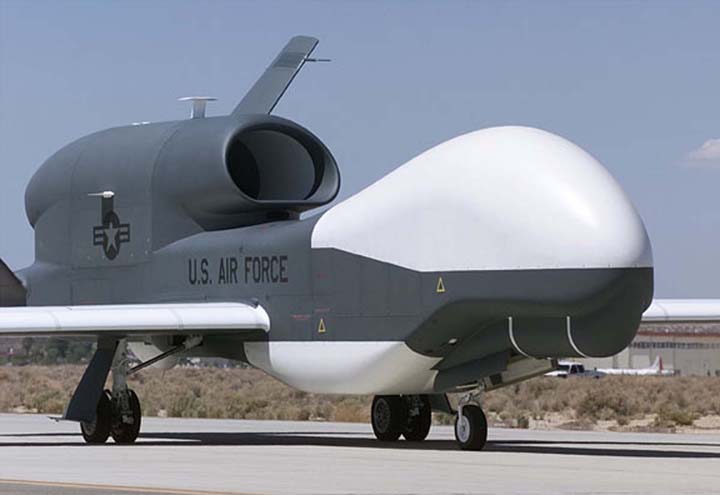


Espero que não siga isto:
The RQ-4 Global Hawk’s Continuing Woes
So, the Pentagon still isn’t happy with Northrop Grumman’s RQ-4 Global Hawk drone. Just this week a report from the DoD’s top weapons tester emerged saying the high altitude spy jet is “not operationally effective for conducting near-continuous, persistent” ISR, according to Bloomberg.
Apparently, the Block 30 version of the jet is only capable of providing 40 percent of its requested coverage during flight tests in last fall and early winter that saw three different planes flying three to four missions a week. All this has led the pentagon to declare that the jets — long slated as the replacement for the ancient U-2 Dragon Lady fleet — are not operationally suitable.
The system “is not operationally suitable,” the report states. “Global Hawk long endurance flights do not routinely provide persistent ISR coverage due to low air vehicle reliability.”
“Mission-critical components fail at high rates, resulting in poor takeoff reliability, high air abort rates, low mission capable rates, an excessive demand for critical spare parts and a high demand for maintenance support,” the report said.
The Air Force has bought 16 of 42 planned Block 30 drones, designed to take detailed ground pictures from high altitudes and to collect signals intelligence. The remaining 26 drones would cost about $3.08 billion, David Van Buren, the Air Force’s senior acquisition executive, said in a previous interview.
This comes more than one year after Van Buren said he was not happy with Northrop’s performance in delivering the jet on time and on-budget. Last June, the Pentagon annoucned that it was delyaing its decsion on buying production parts for the Block 30 and 40 versions of the planes after a Global Hawk performed poorly in tests to see how well it could transfer its sensor data to a ground station. That problem was blamed on the fact that the ground station wasn’t the type that would be used in the real world.
However, last fall’s tests were supposed to have been performed using the actual system, known as the Distributed Common Ground System, that is used to process airborne intelligence info at military bases around the world.
So, this is one more blow to the program that, as Bloomberg points out, has already seen its costs balloon more than 25 percent. Not a good thing in a time of budget cuts for programs that don’t seem to be performing as advertised.
Here are some more not-so-happy details on the program per the Bloomberg report:
The current procurement cost — exclusive of research, development and base construction — is $113.9 million, up from $90.8 million in 2000 dollars, according to service figures. When research, development and construction of facilities are factored in, the cost is $173.3 million per aircraft; the comparable cost in 2000 dollars is $150 million.
The report highlights deficiencies with the plane’s airframe and sensor equipment. Frequent failures of “mission– critical” components — the electrical generator, navigational unit and adhesives used to secure nut plates — resulted in delayed takeoffs or canceled missions, according to the document.
The Enhanced Imagery Sensor Suite, or EISS, made by Waltham, Massachusetts-based Raytheon Co., provides data that meet or exceed most operational requirements for imagery intelligence, while the Airborne Signals Intelligence Payload, or ASIP, made by Northrop, doesn’t consistently deliver actionable signal intelligence, according to the report.
The inability of the aircraft to conduct persistent operations “is not a permanent condition,” and can be mitigated if the Air Force takes “strong corrective actions” on the reliability issues identified by the Pentagon, according to the document.
The report includes 16 recommendations to improve the operational effectiveness and suitability of the aircraft, including upgrading communication systems, developing de-icing systems to boost all-weather capabilities and improving operator training programs for the ASIP sensor.
“In the interim, operational commanders should anticipate low air vehicle mission capable rates, spare part shortages, and a heavy reliance on system contractor support to sustain operations,” the report says.
Read more:
http://defensetech.org/#ixzz1OgB130CJ
Defense.org










